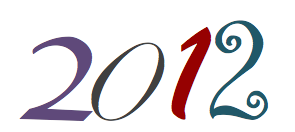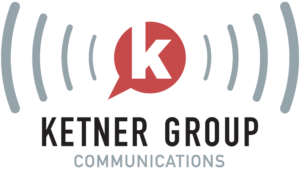For those of us who spend our working hours focused on retail technology, April 2012 was a landmark month, for two reasons.
First, IBM announced that it was selling its POS business to Toshiba on April 16 – exiting the business that it started nearly 40 years ago and dominated for decades. To someone who started his retail tech PR and marketing career working with POS companies such as Wincor Nixdorf, Triversity and 360Commerce, this was a watershed event. IBM owned the POS industry. To other POS hardware manufacturers, IBM was the #1 competitor and the standard against which they were always compared. IBM was also the preferred hardware partner for virtually every POS software company, too, due to IBM’s brand reputation and unparalleled reach into retail.
I’ll leave it to the retail industry analysts to dissect all the reasons behind IBM’s decision (and for an excellent analysis by IHL’s Greg Buzek, click here). However, one reason that Greg mentions stood out above all the others: the continued rise of mobile, which leads me to the second point.
When the annual RIS/Gartner Technology Study was released early last month, retailers cited “mobile POS with payment” as their top technology for 2012. Retailers also ranked “developing a mobile enterprise and/or store strategy” as their #2 action item over the next 18 months – second only to social media.
Is mobile POS one of the main reasons that IBM is saying “adios” to the POS market? Certainly margin erosion in POS hardware was the key reason, but apart from that, I think it’s all about the shift to mobile. And in fact, IHL’s research shows that 72% of specialty retailers plan to roll out mobile POS, and they’ll also be purchasing 20% fewer traditional POS terminals.
Of course, traditional POS isn’t going to disappear completely, at least not anytime soon. But there are compelling economic and customer service advantages behind retail’s continuing rush to mobile. In years to come, I think we’ll see fewer cash wraps in stores, especially department stores and specialty, freeing up retailers to rethink and redesign the retail store experience. The work that Ketner Group is doing with our clients in mobile POS, mobile commerce and location-based mobile marketing is certainly hastening the transition.
April, 2012: IBM exits the retail POS that it founded, and mobile POS is crowned the #1 technology in retail. It’s no coincidence – and it’s one of the reasons that retail tech fascinates and intrigues me, with surprises and twists as new technologies continue to unfold.

 Has the press release run its course as a valuable communications tool, or, to paraphrase Mark Twain, have rumors of its death been greatly exaggerated? A few of us share our opinions on why—or why the press release isn’t—dead.
Has the press release run its course as a valuable communications tool, or, to paraphrase Mark Twain, have rumors of its death been greatly exaggerated? A few of us share our opinions on why—or why the press release isn’t—dead.
 It’s our favorite time of the year—and I’m not talking about the Holidays. December is the month where our clients start thinking about goals for their 2012 public relations programs. In addition to new technology and industry standards, every year brings growth and change to a business, so re-evaluating one’s PR program is a must. Here’s a look at five of the most important questions companies should ask themselves and their PR agency when planning a new PR strategy for 2012.
It’s our favorite time of the year—and I’m not talking about the Holidays. December is the month where our clients start thinking about goals for their 2012 public relations programs. In addition to new technology and industry standards, every year brings growth and change to a business, so re-evaluating one’s PR program is a must. Here’s a look at five of the most important questions companies should ask themselves and their PR agency when planning a new PR strategy for 2012. If anyone needed more proof that mobile is the hottest trend in retail, RIS News reported
If anyone needed more proof that mobile is the hottest trend in retail, RIS News reported  comparing what I thought a career in PR would look like at 21 to what it actually is after nearly 5 years of going from internships to account coordinator and executive roles to senior account manager. Now I love my job and I’m sure I chose the best career for me, but one thing is certain: At 21, I had not even a clue what I was in for.
comparing what I thought a career in PR would look like at 21 to what it actually is after nearly 5 years of going from internships to account coordinator and executive roles to senior account manager. Now I love my job and I’m sure I chose the best career for me, but one thing is certain: At 21, I had not even a clue what I was in for. My name is Catherine Mitchell and I’m a senior public relations student at UT Austin. Knowing that graduation is slowly sneaking up on me in December, I decided that I needed more experience in the public relations Industry before I could truly know which path to choose when I graduate. This leads me to the beginning of my journey with Ketner Group!
My name is Catherine Mitchell and I’m a senior public relations student at UT Austin. Knowing that graduation is slowly sneaking up on me in December, I decided that I needed more experience in the public relations Industry before I could truly know which path to choose when I graduate. This leads me to the beginning of my journey with Ketner Group! I’m not going to lie. Sometimes my job is hard. In fact, it can be downright frustrating and still causes me to shed a few tears now and then. Twelve years working in public relations has taught me to have thick skin and to keep pushing forward when things get tough, but I still have days when I can’t wait to get home and pour myself a tall glass (or two) of my favorite white wine. And I’m not the only one who feels this way, either. According to
I’m not going to lie. Sometimes my job is hard. In fact, it can be downright frustrating and still causes me to shed a few tears now and then. Twelve years working in public relations has taught me to have thick skin and to keep pushing forward when things get tough, but I still have days when I can’t wait to get home and pour myself a tall glass (or two) of my favorite white wine. And I’m not the only one who feels this way, either. According to  So, imagine my surprise when I read a
So, imagine my surprise when I read a 